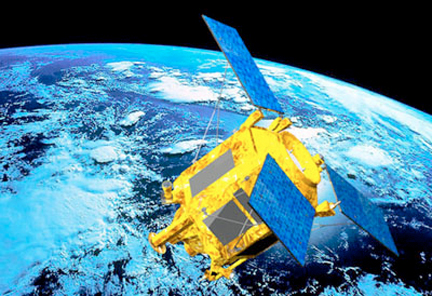Copernicus—known as GMES (Global Monitoring for Environment and Security) when it was founded in 1998 by the European Union and ESA—aims to provide a series of data obtained by observation satellites and in-situ measurement instruments, in order to produce a comprehensive global view of the state of our planet.

Image is courtesy of ISRO.
SPOT 6 and its future sister SPOT 7 belong to a new generation of satellites operating in constellation with a considerably increased image-acquisition success rate, owing to both their agility and their capacity for regular daily updates on programming plans and weather forecasts. Such performance is a genuine asset for managing natural disasters and humanitarian crises. These new generation satellites are also capable of acquiring wide-area imagery, which is necessary for the deployment of environmental services on a continental and local scale, capturing images at a resolution of 1.5 metres.
Astrium’s contributions to Copernicus include operating the optical and radar-based satellites—SPOT 5, Pléiades 1A & 1B and TerraSAR-X and TanDEM-X—that supply data for Copernicus services. Astrium is also playing a major part in the construction of the Sentinel satellites that will complement the data from the Copernicus Contributing Missions, while Astrium Services provides important services upstream of Copernicus.
The European program is designed to assist with the preparation of national, European and international legislation relating to the environment—particularly climate-change legislation—and to ensure it is applied correctly.
Funded by the European Commission, it allows member states’ European, national, regional and local institutions to access environmental data and services for the purposes of environmental protection, land-use management, sustainable development, security and risk management. The information services offered by Copernicus can be divided into six main thematic areas: land, marine, emergency management, atmosphere, security and climate change.
The Pléiades 1A & 1B and SPOT 6 & 7 satellite constellations represent a major renewal of Astrium Services’ sensor capability and allow the company to ensure continued implementation of the European Union’s environmental policies within the framework of Copernicus’ services.


